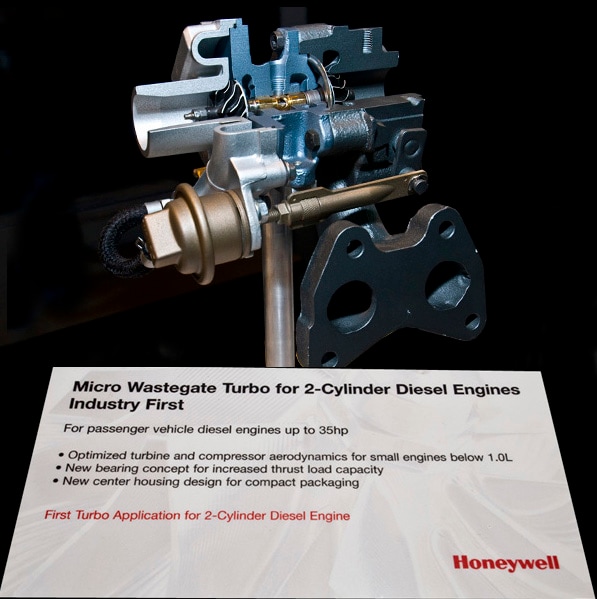
New Diesel Engine Tech On Show
More efficient diesel technologies displayed at Auto Expo 2012

This auto show wasn’t that high on technological advancement when it came to scientific development. But we saw more happening in the field of diesel technology, which is very relevant to current automotive trends—be it towards smaller diesel engines, or hybrids for buses which can bring down diesel emissions by half, or making bigger engines which can meet stringent emission norms. Here are three interesting examples:
1. Honeywell Turbo Technologies: The company showcased a turbocharger application for micro diesel engines (1 litre or below). This has been developed keeping the diesel version of Nano in mind. It can also be used for engines like that of the Ace. This is the first time that this turbocharger, the smallest in the company’s kitty, has been showcased and it is an industry first. Diesel engines need turbochargers to generate more power while controlling emissions in order to meet EU5 and EU6 standards. The turbocharger for micro diesel engines will raise fuel efficiency by 30 percent. The turbo penetration in India at the moment is 31 percent, which is expected to rise to 40 percent in the next four years. The micro turbocharger was developed in India and is mainly for the domestic market, and might be exported to other emerging markets where Nano-like cars are being developed.
2. Volvo’s Hybrid Bus: Volvo showcased its hybrid bus which has been produced using its own in-house technology. The Volvo 7700 Hybrid has a small diesel engine and an electric motor, which can be used either independently or jointly. The battery that drives the electric motor is charged through re-generative braking. The diesel engine shuts off when the bus is stationary and does not start again till the bus reaches 15-20 kmph, further saving fuel. While the bus has been produced in European countries since 2010, this is the first show of the latest version, which can reduce fossil fuel costs by 37 percent and emissions by half.
3. Cooper Corporation’s Diesel Engine: The Maharashtra-based company launched a four cylinder diesel engine. For vehicle and variable speed applications the engine will use CRDI (Common Rail Direct Injection) systems meeting the corresponding emission norms applicable currently (e.g. Euro IV and BS IV for vehicle and variable speed application). The engine has a flexi fuel option (diesel, CNG, LPG)—from an Indian maker, this represents the best technological development. The company, which also announced a foray into making light commercial vehicles in the next 18 months, will use these new-generation engines.
X




